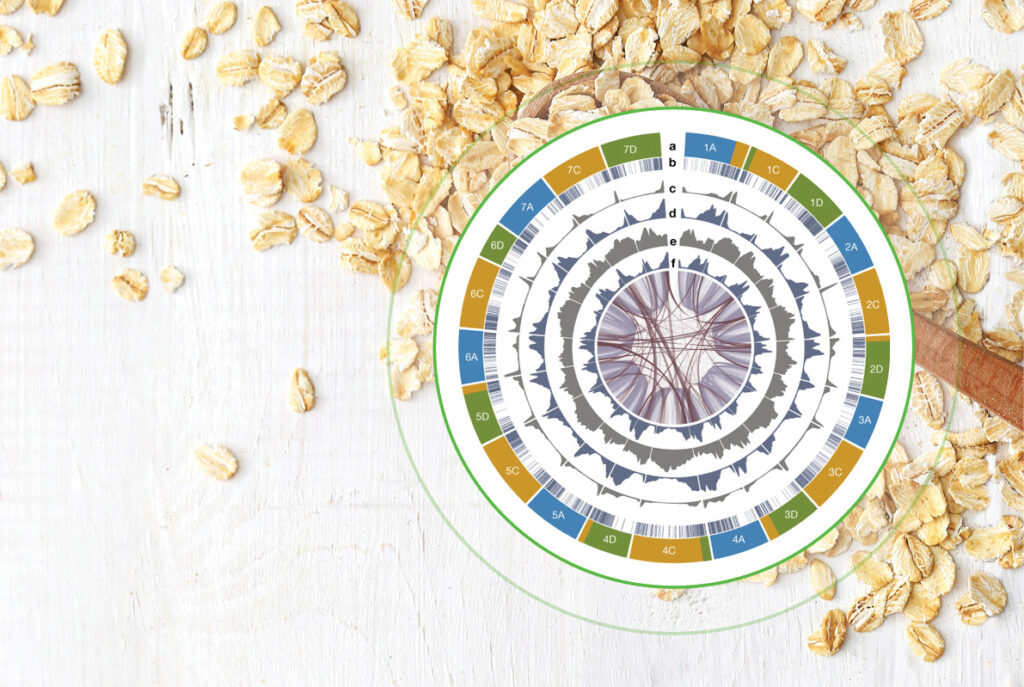Decoding the oat genome
11 May 2023

The Goldilocks of cereals
Highly restrictive gluten-free diets are often associated with lower intakes of whole-grains and soluble fibre, leading to higher rates of bowel cancer and heart disease. The first genetic mapping of the humble oat cereal could be a game changer for plant breeding and personalised nutrition, especially for sufferers of coeliac disease.
Oat is an old crop with a low carbon footprint and substantial health benefits, but its inclusion in gluten-free diets remains controversial in scientific circles. Unlike wheat and barley, oats don’t contain storage proteins like gliadin which trigger harmful inflammation in people with coeliac disease, but a distantly related protein called avenin has resulted in conflicting recommendations and regulations across countries creating confusion for consumers.
In Australia and New Zealand, oat products cannot include ‘gluten-free’ claims, but higher thresholds in Europe and the United States don’t recognise avenin as gluten.
Ground-breaking new research by the CSIRO, the Walter and Eliza Hall Institute of Medical Research, Edith Cowan University and others has mapped the highly complex mosaic oat genome which could bring greater clarity to this complex issue.
It’s revealed that oats bear closer genomic and protein similarities to rice, which is safe in coeliac disease, compared to wheat and other gluten-rich cereals.
This has allowed CSIRO researchers to confirm, on both a gene (DNA) and protein level, that oats contain fewer protein sequences that are known to trigger food allergy and intolerance.
The research is not only a step closer to the safe inclusion of oats into gluten-free diets, but also confirmed their high levels of soluble fibres that reduce blood cholesterol and improve heart health.
It also has major potential for breeding and cultivation of new varieties in Australia’s oat industry. By decoding the oat genome, breeders can now identify and target specific traits through gene-editing to improve nutritional profiles, increase crop yield, or make the crop more resilient to disease or drought.
This breakthrough research may provide Australian farmers with unique, differentiated grain for the global market that will maintain Australia’s position as a supplier of premium, high-quality grain that also delivers specific health benefits to Australians and the global population.
Read more of the Winter 2023 edition of CropLinks here: CropLife Australia | CropLinks Winter 2023